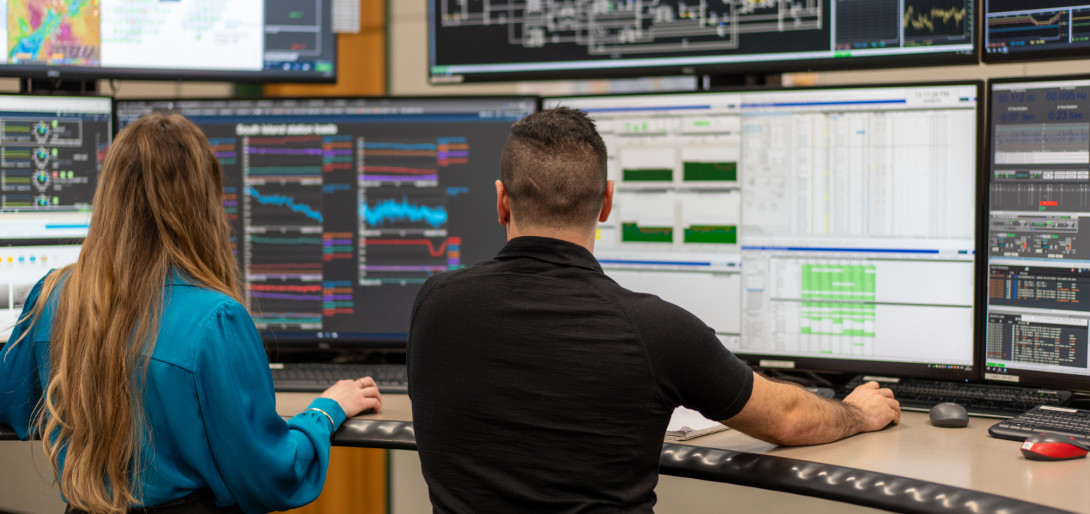07 Oct 2025

Transpower is seeking views on proposed changes to how it prepares and publishes information to help the electricity sector manage risks to Aotearoa New Zealand’s electricity supply.
The information provided by Transpower is used by electricity sector participants to guide their decisions, including how much fuel will be needed to power the country through winter.
Transpower Chief Executive James Kilty said the proposed changes to the System Operator Security of Supply Forecasting and Information Policy (SOSFIP) reflect feedback from a round of consultation earlier this year.
“Security of supply risks are increasing as New Zealand’s power system becomes more complex,” he said.
“The decline in gas availability, the increase in intermittent renewable generation and the retirement of thermal generation creates a challenging picture for the next few years.
“Transpower’s focus is on helping the sector deliver a secure supply of electricity for New Zealanders now and into the future as the system evolves. The changes we are proposing will support that, including proposals to clarify when generators may be able to access additional water in hydro lakes for power generation.”
We must get it right for all New Zealanders
Access to this additional water – known as contingent storage – is dependent on conditions set out in resource consents issued by local authorities that allow the water to be used if it is necessary to avoid the risk of power cuts. The triggers for this are an escalating series of risk curves reported on by Transpower as set out in the SOSFIP.
“This additional water is New Zealand’s electricity reserve and it must be used carefully. Once it is used, it’s gone until sufficient rain arrives to build storage up again,” Mr Kilty said.
“We must get this right for all New Zealanders. That’s why it’s important that we hear from a range of stakeholders before making our final recommended changes to the Electricity Authority for its consideration.”
If contingent storage is used early and rain doesn’t come, an Official Conservation Campaign (OCC) may need to be triggered to ask consumers to voluntarily reduce electricity use. If it remains dry, rolling power outages may then need to be initiated across large areas of the country, meaning widespread power outages.
Changes align with Government actions
Security of supply was a key focus of the Government’s electricity sector review, which was released with accompanying actions on 1 October.
Mr Kilty said the proposed SOSFIP changes being consulted on are consistent with the Government’s expectation that energy risk reporting remains fit for purpose in an evolving energy system.
“Risk reporting played an instrumental role in managing the record dry period in 2025, helping avoid the sustained high prices we saw in 2024. The changes we are proposing further enhance what we are already doing to monitor, assess and communicate risk to Kiwi’s electricity supply.
“We will continue to work with Government, the sector and other stakeholders to ensure they have the necessary information to aid their decision-making around security of supply and future investment.”
The consultation paper and more information is available here. Submissions are due by 5pm 4 November 2025. This will be followed by a one-week period for cross submissions.
Additional information
Security of Supply Forecasting and Information Policy (SOSFIP)
The SOSFIP is a system operation document approved by the Electricity Authority and incorporated by reference into the Electricity Industry Participation Code. The SOSFIP describes how Transpower as the system operator prepares and publishes information to assist participants to manage security of supply risks.
This information reported by Transpower is based around a series of successive risk curves. When hydro storage drops below certain levels relative to the supply of other generation sources including renewables and thermal fuels like coal and gas, specific actions are triggered.
These include electricity generators being able to access additional water for electricity generation in lakes Pūkaki (Meridian Energy), Hāwea (Contact Energy) and Tekapo (Genesis Energy) under local resource consent conditions.
The Authority is responsible for over-arching market design under which the SOSFIP sits and must approve any changes to it consistent with its statutory objective. The Electricity Authority funds the System Operator through its levy process. The costs are borne by electricity industry participants such as generators, distributors and retailers, who may pass this cost on to consumers.
It is the role of Transpower as the System Operator to operate the SOSFIP, and it must comply with the SOSFIP that is current at the time. The SOSFIP addresses physical supply risks and does not consider price impacts.
The current SOSFIP can be found on the Authority’s website.
For more information please contact:
Transpower’s communications team on 021 195 8613 or [email protected].